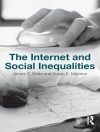The Sociology of Immigration provides students with a contemporary sociological perspective on the entire immigration process: deciding to leave one’s home country, establishing oneself in a new host society, being received by the host population, and deciding whether to assimilate or seek citizenship. Using historical and contemporary examples, it applies many foundational concepts in sociology, such as culture, socialization, race and ethnicity, gender, and the sociological imagination, to the phenomenon of human migration. The text introduces immigration and migration on a global scale, but also emphasizes immigration in a U.S. context.
Table of Content
Chapter 1: An Introduction to Studying Immigration
Chapter 2: Why do People become Immigrants?
Chapter 3: Who becomes an Immigrant?: A Demographic Profile
Chapter 4: A Brief History of Immigration to the United States
Chapter 5: Immigrant Destinations in the Rest of the World
Chapter 6: Becoming an Immigrant
Chapter 7: Assimilation and its Variants
Chapter 8: Transnationalism and Multiculturalism
Chapter 9: Anti-Immigrant Sentiment
Chapter 10: Undocumented Immigrants
Chapter 11: Forcibly Displaced People: Refugees and Asylum Seekers
Chapter 12: Acquiring Citizenship
Chapter 13: Busting Myths about Immigration
Chapter 14: Emigration: What Becomes of the Origin Society?












